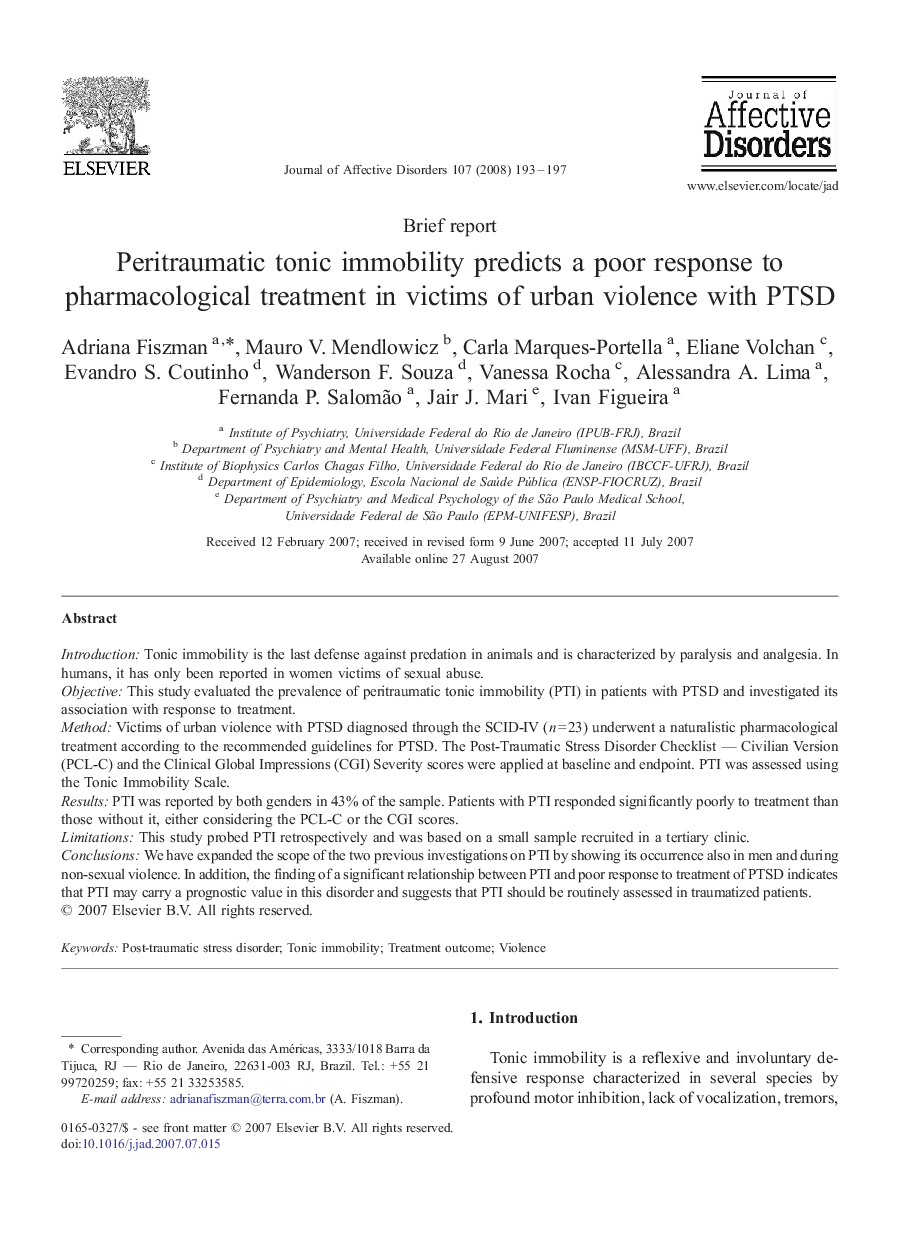| کد مقاله | کد نشریه | سال انتشار | مقاله انگلیسی | نسخه تمام متن |
|---|---|---|---|---|
| 6236865 | 1608214 | 2008 | 5 صفحه PDF | دانلود رایگان |

IntroductionTonic immobility is the last defense against predation in animals and is characterized by paralysis and analgesia. In humans, it has only been reported in women victims of sexual abuse.ObjectiveThis study evaluated the prevalence of peritraumatic tonic immobility (PTI) in patients with PTSD and investigated its association with response to treatment.MethodVictims of urban violence with PTSD diagnosed through the SCID-IV (n = 23) underwent a naturalistic pharmacological treatment according to the recommended guidelines for PTSD. The Post-Traumatic Stress Disorder Checklist - Civilian Version (PCL-C) and the Clinical Global Impressions (CGI) Severity scores were applied at baseline and endpoint. PTI was assessed using the Tonic Immobility Scale.ResultsPTI was reported by both genders in 43% of the sample. Patients with PTI responded significantly poorly to treatment than those without it, either considering the PCL-C or the CGI scores.LimitationsThis study probed PTI retrospectively and was based on a small sample recruited in a tertiary clinic.ConclusionsWe have expanded the scope of the two previous investigations on PTI by showing its occurrence also in men and during non-sexual violence. In addition, the finding of a significant relationship between PTI and poor response to treatment of PTSD indicates that PTI may carry a prognostic value in this disorder and suggests that PTI should be routinely assessed in traumatized patients.
Journal: Journal of Affective Disorders - Volume 107, Issues 1â3, April 2008, Pages 193-197